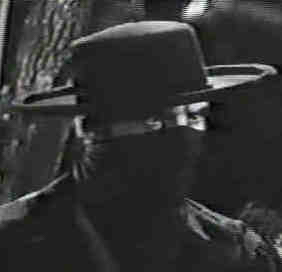Before you ask: No, this isn’t the first time I’ve seen the original 1980 John Carpenter directed film (The Fog would be remade, to much derision, in 2005…I haven’t seen that version as of yet). However, in watching the new Shout Factory Blu Ray release, it might as well be the first time I’ve ever seen the film.
The sound and images are that good.
The first (and I believe only) time I ever saw The Fog was in the early 1980’s and probably via VHS tape. Back then the idea of “letterboxing” images was years away and, therefore, I saw a cut down view of the film. I also recall the image quality was pretty dreadful. In fact, if you check out the extras on the Shout Factory release and click on the old promo made for the film (Tales From the Mist), in the opening minute you’ll basically see the type of image I saw way back when. Needless to say, count me among those who was delighted with the new, most excellent presentation.
As far as the movie itself, I recall liking -but not loving– The Fog. Now, with this pristine presentation and the proper widescreen view, would I enjoy the film more? Or has time dulled whatever horror edge the film once had?
Happily, the answer is a resounding “no”.
I’m a fan of many of John Carpenter’s films. I absolutely love Assault on Precinct 13. I also love Escape From New York, The Thing, and Big Trouble In Little China. While slasher films aren’t generally my cup of tea, I also enjoyed Halloween.
It was after the incredible success of the original Halloween that Mr. Carpenter was asked to follow it up with another horror film. He wound up making The Fog but, unlike Halloween, theatrical success was mild, if not outright disappointing. Nonetheless, there are those who feel The Fog is a far better overall accomplishment than Halloween.
Is it? I suppose it depends on what you look for in horror. While Halloween falls in the “slasher” category of horror, The Fog belongs in the more cerebral wing. It is a slow burn film with almost no “gory” elements. In some ways, it reminded me in tone to Stanley Kubrick’s The Shining or The Haunting.
In The Fog you have an old fashioned (even for its original release date!) ghost story set in a sleepy Californian fishing town of San Antonio Bay. The town is on the verge of celebrating its one hundredth anniversary. On the day before the event, strange things start to occur, and Father Malone (Hal Holbrook) discovers a hidden journal in his church walls, one written by his distant relative and one of six founders of San Antonio Bay.
The journal reveals the town’s six founding members made an agreement with a band of unfortunates suffering from leprosy to allow them a share of their land to live in. The agreement, however, was a trick. The six founders didn’t want the lepers…they wanted to steal their leader’s money.
During a heavy fog, the lepers approached the town in their ship. The six townspeople lured them into rocks with a phony guiding light and the ship sank with all aboard. Afterwards, the six conspirators picked up the gold and that was that…
…Until one hundred years later when the fog returns and, with it, the spirits of the dead.
Including the role of Father Malone, The Fog features five main characters. Adrienne Barbeau is Stevie Wayne, owner and disc jockey of the town’s local radio station. Jamie Lee Curtis is Elizabeth Solley, a free spirited hitchhiker who happens to come into town at the wrong time. Her real life mother, Janet Leigh, is Kathy Williams, the town’s mayor. Finally, you have Tom Atkins as Nick Castle, a local who picks Elizabeth up (in all senses of the word).
If the film stumbles in any way, it is the sudden -and a little hard to swallow- attraction between the very young Jamie Lee Curtis and the far older Tom Atkins’ character. Even in the wild world of movie fantasy, that couple never really looked right, at least IMHO.
Still, this is only one small element and in no way torpedoes the rest of the film. What makes The Fog work is the sustained eerie atmosphere (no pun intended) John Carpenter and company build around the coming, and eventual arrival, of the evil fog and its ghostly -and revenge seeking!- inhabitants.
In conclusion, The Fog is a great film and certainly one worth revisiting.

